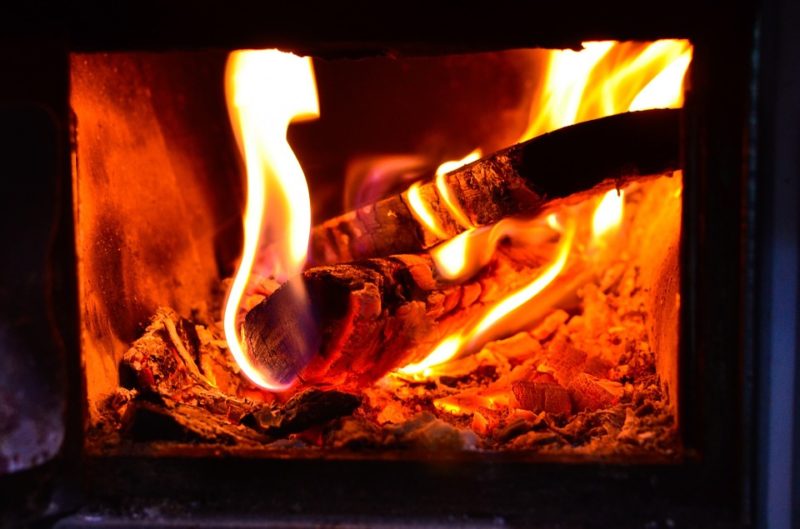How to operate a wood burning stove? Stoves like wood burning one, having fireplaces that are open commonly as it helps to make your stove burning more efficiently. Stoves like these helps get more heat out of every piece of timber but knowing about using one is crucial to look at the extent of it.
It takes a good amount of patience to start a fire in a wood stove. In five minutes, you probably won’t be able to get your fire starting. It may take you hours, but patience is a virtue when it comes to beautiful things. However, learning to be patient is only one aspect of the pleasure of building a fire in a wood stove. It’s both a peaceful and a highly satisfying pastime because once the embers are lit, they can keep your place warm all night. The same fire can survive several months with minimum upkeep.

Lighting a wood-burning stove fire is a slow-living lifestyle option, similar to gazing over a magazine while sipping coffee or taking the scenic way to take in the hues of the autumn foliage. It takes a long time, and it isn’t simple. It can be aggravating at times and also necessitates your undivided attention and care.
However, once you fully understand how to start a fire, it’s a very fulfilling process. Woodstove flames generate a beautiful aroma that fills your area and extends outside, creating the perfect cold-weather scent. What’s more, how wonderful is it that such ancient technology can heat an entire space without modern heating systems? It’s an excellent technique to heat your home in an environmentally friendly manner. What things should you have and do to get the most out of your wood-burning stove? Are these questions constantly running all around in your mind? Fortunately, this article shall answer all your questions about that beloved wood-burning stove you’ve got!
5 Steps To Operate A Wood Burning Stove
So without much fuss, here are the quick and easy steps on how to operate a wood burning stove:
Step #1. Fully open the damper
Doing this allows air to freely circulate in the fireplace and smoke to escape to the outside. For increased circulation, make sure to set your air intake system to high.
Step #2. Break dry twigs into smaller pieces
To start a micro-fire, place the twigs on the stove and light them. If the twigs are dry, no cardboard or paper is required. (When you bend dry twigs, they should break; if they don’t, they’re too damp.) Keep feeding the fire with the tiniest twigs and slivers of wood you can find. Don’t get overeager—at the start, provide the fire with only small little twigs or timber. Be sure to keep the stove’s door partially open. You don’t want to close the door until your fire is self-sustainable. Keep in mind: Blowing on the fire will help it catch faster. The more air that’s circulating, the better!
Step #3. Start adding logs
Your fire should be able to burn essential firewood at this stage. You can start adding larger logs once your starting fire with the smaller wood is burning vigorously. Start with smaller logs and work your way up. Make a coal bed (glowing red embers) first before adding any larger wood. While larger logs can be added, the smaller logs will make it easier to keep your fire.
Step #4. Add larger logs
This step is the moment you’ve been looking forward to! You can add larger logs and close the door after your bed of coals is glowing, and your fire is regularly burning. If you close the door, keep an eye on it since you don’t want to lose all your hard work. Repeat steps 2 and 3 if the fire appears to be fading with the door closed, and try adding more cardboard to the fire’s bottom.
Step #5. Enjoy!
With your beautiful fire, enjoy the benefits of a leisurely life. Because all of the materials you utilized were natural, you can dispose of the ashes outside once the fire is out.
One More Step: Put Out Your Wood-Burning Stove
To extinguish a wood burning stove, first, close the door. Then, remove any additional wood from the fire. In turning off the oxygen supply to the fire, fully close any controlled air vents on the stove. Please don’t close the damper since the fire will smoke for several hours after it’s been put out, producing waste gases and smoke. Also, read about how to clean wood burning stove.
Conclusion
Keep in mind that maintaining fire on a wood stove is similar to having a pet in the house. A fire requires your attention at regular intervals, and if your judgment fails, it will either die or run uncontrolled. You must feed it the right things at the correct times, and you must transport its waste out of the house. In exchange, it will cook your meals and heat your water and living space for you. So those were what you need to do and follow on how to operate a wood burning stove. We hope that this post contributed to the use of your beloved wood stove! Good luck, and remember to be patient. And you may want to read related articles: know what to do with ashes from wood stove and how to install a wood stove in a garage.
